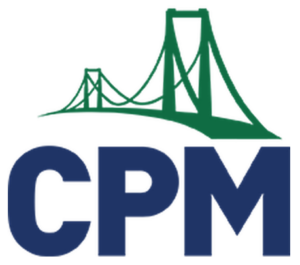Mark Cote’, CPM Project Manager
In 1988, John Allen Paulos published a revealing and poignant book entitled, Innumeracy – Mathematical Illiteracy and Its Consequences. In his message filled with riveting examples and sadly humorous anecdotes, Paulos painted a troubling picture of American society’s struggle with the meaning of number. This is a story about one such struggle.
For many families, taking on the high school to college transition can be a challenging undertaking. Those that have the financial resources are able to hire private counselors to offer guidance and help with the lengthy application process. In general, the typical private counselor has a wealth of experience with America’s post-secondary world, is highly educated themselves, and takes great pride in providing excellent professional service to their clients.
Most members of the college counseling community belong to both regional and national professional organizations that offer a wonderful network of local experts who are virtually always on call. With blogs, webpages, and a listserv at their fingertips, counselors have a small army of in-the-know colleagues who are available to exchange information and address the most difficult questions that crop up in the ever changing college admissions landscape.
With any large group of people sharing a common occupational calling, varying levels of expertise exist. Overall, you will find private counselors to be very hard working and exceptionally skilled at helping young scholars fulfill their dreams of getting in to just the right school. And in most cases, facility with number is no problem, as the job often requires collecting and interpreting large amounts of data. But every now and then a math challenge comes up. Just as the world of university entrance requirements may seem mysterious to us, certain applications of statistics and probability can be confounding to them. These perplexing situations become public knowledge when they are presented in the form of questions sent out on the listserv to thousands of members of the national association.
Such a question was recently broadcast to the college counseling community. Sometimes the inquiries posted are thought-provoking and informative. On occasion, others are humorous jabs at the often ridiculously complex testing and admissions process. Many are routine. Then there are those that leave you scratching your head and wondering, “How is it possible that the American school system produced a highly educated person that does not know the answer to this question?”
A short time ago, a counselor made the following post: “I don’t understand what went wrong. I’ve done the math and this just doesn’t make any sense! I had my client apply to 10 universities that each had about a 10% acceptance rate. He didn’t get into a single one! I mean come on! With a 100% chance of being accepted, he’s got to get in somewhere! What’s going on here?!?!”
Fortunately, the collective body of counselors were too polite to post any snarky replies, and one kind soul offered to help untangle the math in a private chat.
So as you can see, we have plenty of work to do as we continue our mission to help lift America out of the throes of innumeracy. Have you come across any instances of innumeracy lately? If so, please send a synopsis of the article, advertisement, media occurrence, or classroom incident to markcote@cpm.org for the next installment of “From the Innumeracy Files.”

